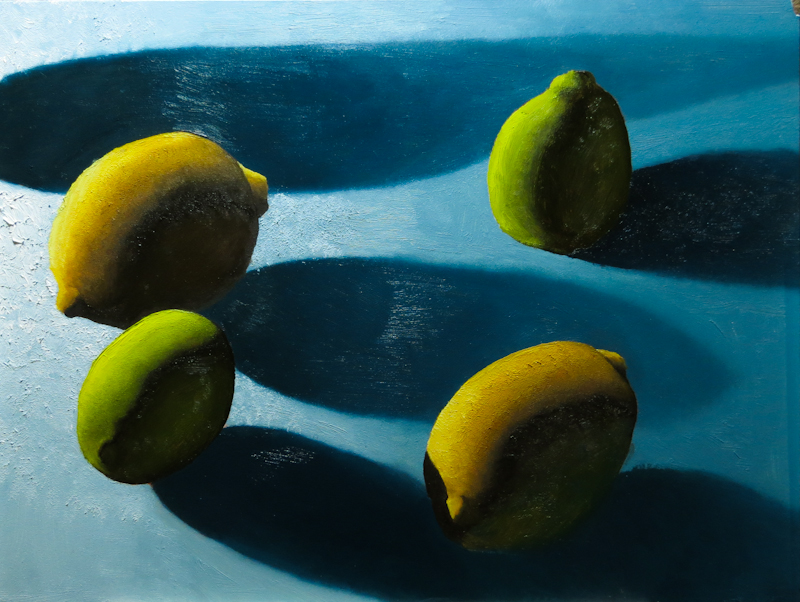This painting started off well, but it didn’t really come together in the end. I loved the way the cast shadows faded from a deep dark blue, sharply contrasting against an impasto flecked pool of light to a soft blue haze that almost blended into the background.
My problems began when I painted the lemons and limes and they began to hover above the surface of the table. Technically speaking, the issue was that the form shadows on the fruit were much darker than their cast shadow counterparts on the tabletop. From an artistic perspective, I had failed to unify the form shadows with the cast shadows.
The fix was to darken the cast shadows and lighten the form shadows until the fruit appeared to rest on the table as you can see below.
I am going to declare this one done and move on.
My biggest learning from this painting is that I need to mass in unified regions of shadow, painting the shapes I see instead of the objects. In the process series below, the initial underpainting is solid because all of the shadows are unified. I got off on the wrong foot on the second step where I painted the dark blue cast shadows as entities distinct from the form shadows on the fruit. I should have painted them at the same time with the same value and, that early in the painting, even the same color.
As second learning is that Ampersand Gessobord is really different than canvas. It takes the first layer of paint very well, but then is gets extremely slippery until the first coat has dried. At this point any contact with the brush is as likely to remove paint as to add it. This isn’t a problem, but it is different, and I will need more practice if I want satisfactory results on Gessobord. For now I think I am going to focus on stretched canvas and canvas panels.
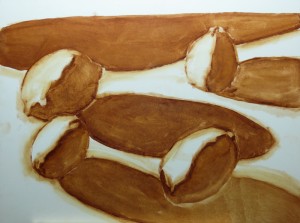 |
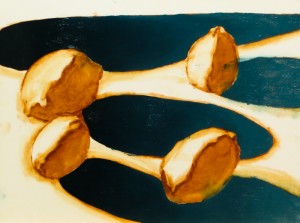 |
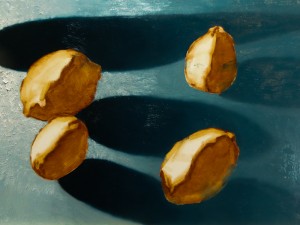 |
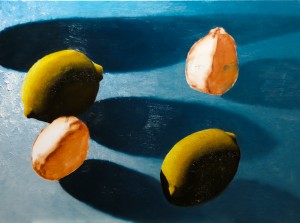 |
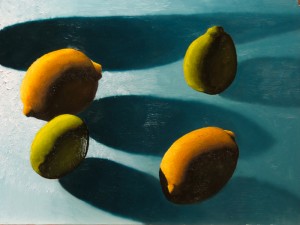 |
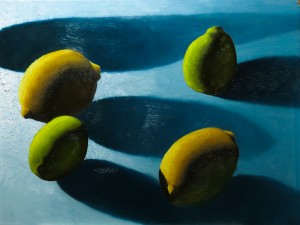 |

